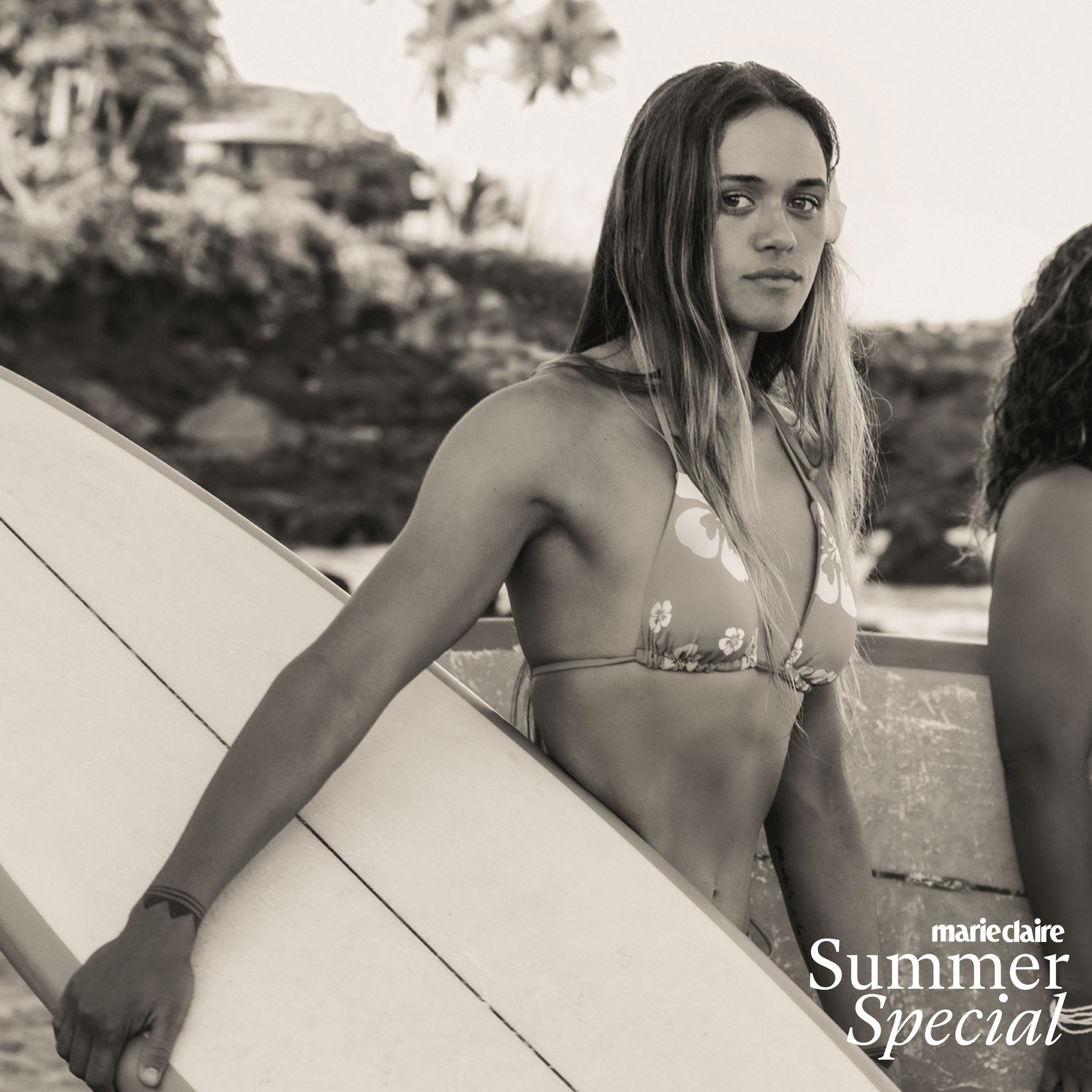
From thin eyebrows to butterfly clips, the ’90s and ’00s are having a moment. So it’s fitting that the star of our Summer Special this May is noughties legend and ultimate surfer-girl sensation, Kate Bosworth, who has collaborated on a new swimwear collection with leading surf brand Roxy.
Through her breakout role in Blue Crush, Bosworth captured a moment in time that shaped pop culture and inspired a generation of women and girls to surf. But while Bosworth’s character, Annie, was riding the Pipeline 20 years ago, the opportunity for female athletes to compete lagged way behind in real life. In fact, it only became possible for women to enter the Pipeline competition a year ago. Yes, really.
Thankfully, surfing for women has come on leaps and bounds since Blue Crush’s release in 2002. It was one of the first sports to pay women the same prize money as men, and it now boasts a wealth of female talent netting top sponsorship deals and competing at the highest level.
I was lucky enough to spend a day at the beach with Bosworth and three professional surfers in Hawaii watching them ride the waves alongside our cover star. Introducing the ever-inspiring Roxy Pro surfers Izzi Gomez, Malu Kinimaka and Suelen Naraisa, who took time out from their busy schedules to tell Marie Claire their stories.
Izzi Gomez
Mental health is a big part of performance… surround yourself with a good team
Izzi Gomez
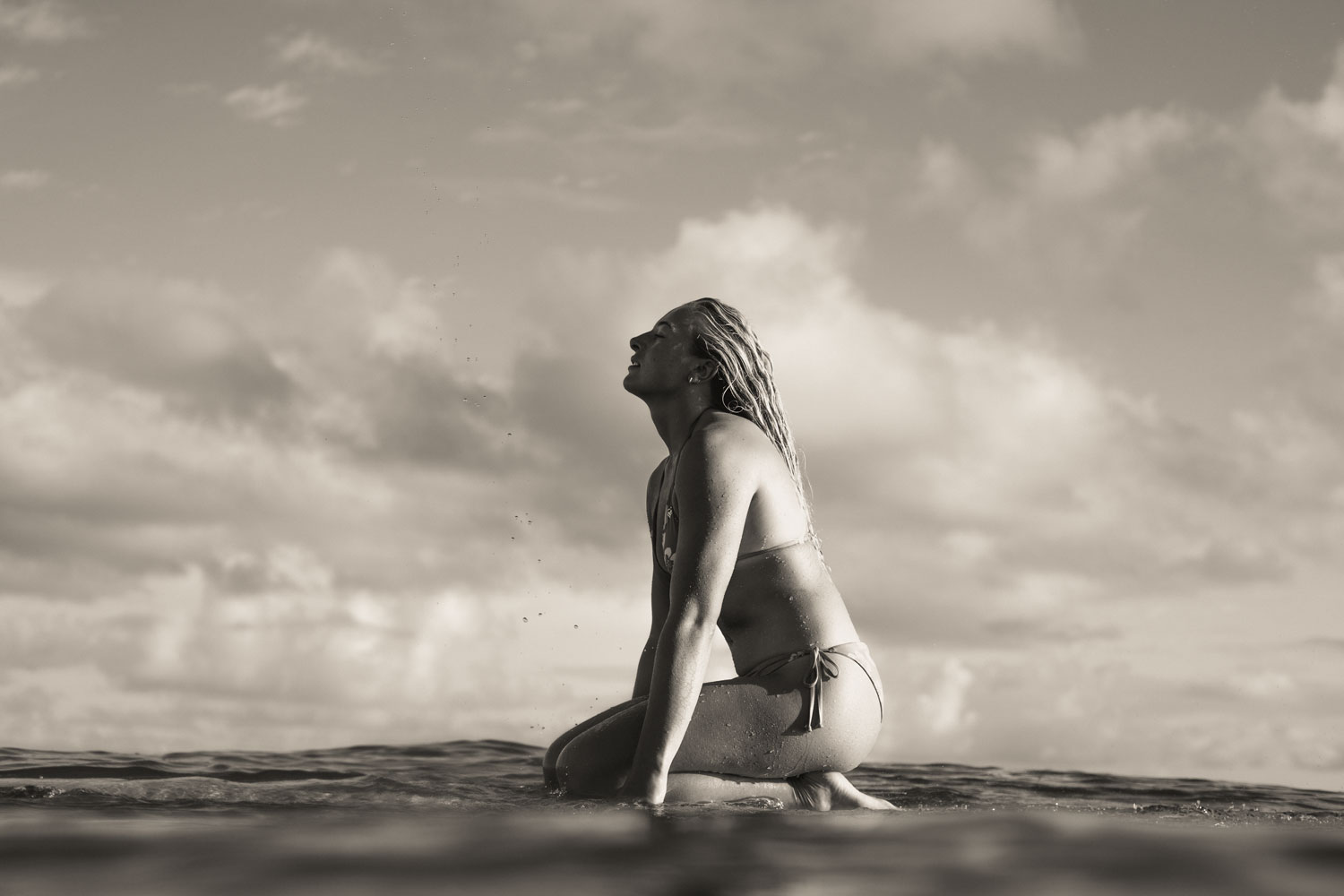
Born into a surfing family, Izzi Gomez would watch Blue Crush – featuring our cover star Kate Bosworth – on repeat growing up. “It inspired so many women,” she tells Marie Claire. It addressed the stigma that girls can’t surf, or “girls are scared of Pipe”, and “now you see so many women at Pipe – it’s amazing.”
Indeed, surfing has always been a big part of Gomez’s life, connecting her with family, nature and the ocean: she was standing up on the waves before she could even walk. “It feels like you just have this freedom to draw lines on the wave and express whatever emotions you’re feeling at the time. It’s really beautiful – a form of art.”
She’s proud that surfing has taken huge strides in equality, too. “In the early days, there weren’t that many women surfing; I feel like as much as they were competitors, they kind of had to stick together and really fight for that equality and the recognition that they deserved. And I think that has also been passed down to the next generations. Myself and all the other girls that are coming after me can have all the opportunities that they didn’t have,” she adds.
Indeed, as well as enjoying a pro surfing career, Gomez is a five-time world champion in stand-up paddle surfing too – a practice that helps her to focus. “Mental health is such a huge part of my performance. With big-wave surfing and competing… if your mental health is deteriorating, it’s really easy to get caught up in all the distractions. So, for me, I just really try to focus on myself and make sure I surround myself with a good team.”
Of course, sustainability and looking after the climate is also hugely important to her. “As surfers, our job is nature so the thought of global warming and climate change and the planet just slowly deteriorating is a really scary thought because so many of us find joy in the ocean and nature.”
On track to becoming a multiple world champion, Gomez is used to travelling around the world to surf. However, long-term, she would love to find a base to call home – somewhere to truly plant roots. Her other dream? To design her own collection for Roxy. Watch this space.
Malu Kinimaka
When I was younger, the ideal look for a surfer girl was blonde hair, blue eyes, small frame. When you’re a professional athlete you just don't always look like that
Malu Kinimaka
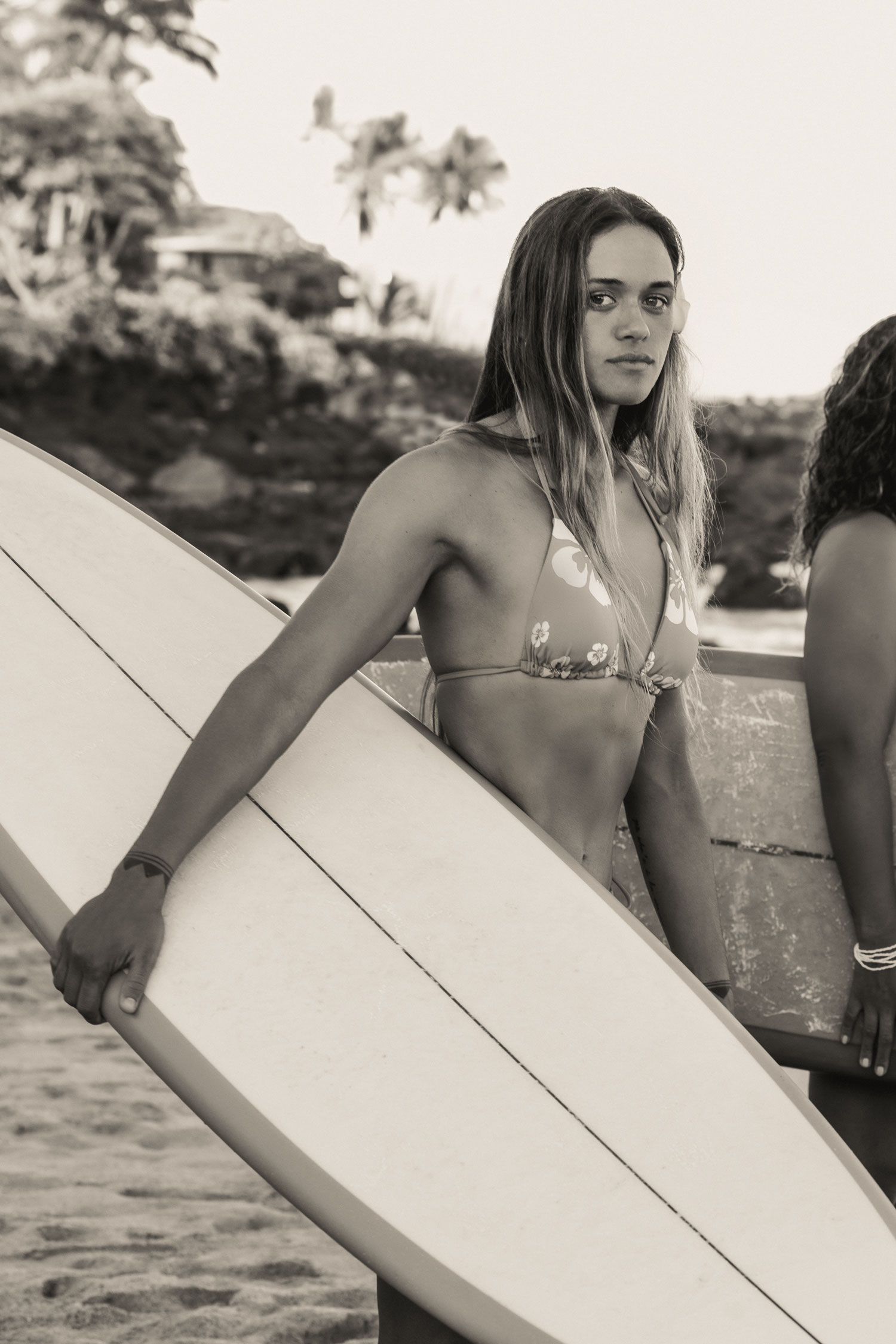
Malu Kinimaka’s earliest childhood memories are of the sea, sand and surfing. Born on the Hawaiian island of Kauai – where the sport is reported to have originated – Kinimaka and her sister learned to ride the waves as soon as they could swim. Boasting Titus Kinimaka – a professional big-wave surfer – as their father didn’t exactly hurt either. In short, Kinimaka was always destined for surfing greatness.
Yet she views it more as a soulful experience than a sport. “I started surfing aged five. I would ride with Dad on his board or on his shoulders. It’s not just an activity, it’s also a cultural practice; it’s an exchange of energy with the natural world around you. It’s always felt like a spiritual place, like a place of healing, a place of testing yourself and your strength and a place of connection,” Kinimaka adds.
Feeling deeply rooted in her Hawaiian identity and cultural heritage has given her “a self-assuredness of who I am; this is where I come from and I know where I’m going because of it. And so surfing is an extension of that identity, but there are so many different forms that it can take,” she says.
When it comes to sustainability, Kinimaka is understandably concerned. As well as conducting her own research on coral-reef health, she has noticed a lot of pollution while surfing outside of Hawaii, particularly in Mexico and the Philippines. “There’s lots of plastic… you’re paddling and you’re surfing and things are hitting you and it’s really sad,” she reveals. “One of the simplest things I can recommend to people is to use a reusable water bottle, and try to diminish the use of plastics as much as possible.”
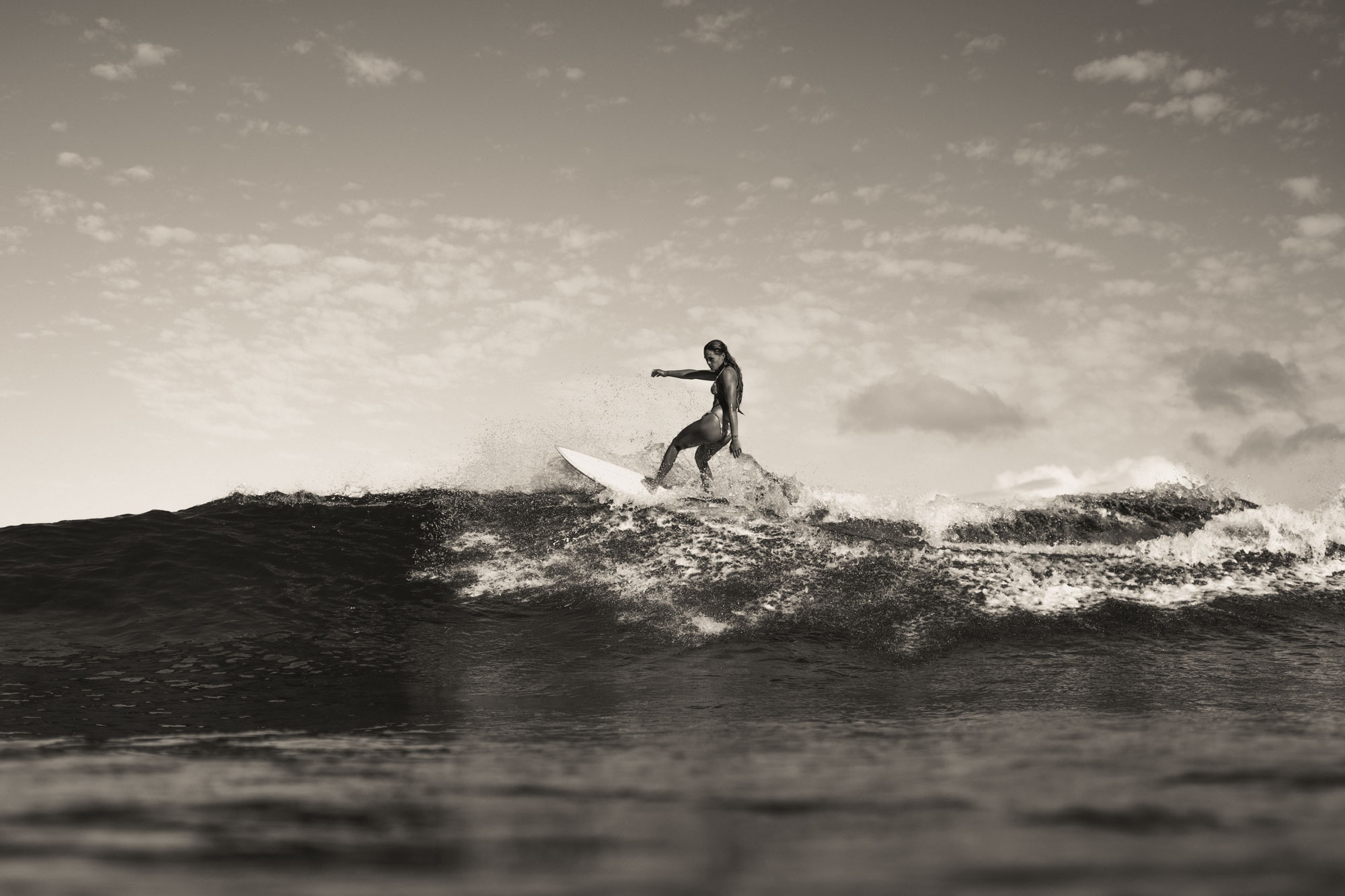
She always shows up for the other women in the surfing community, too. “Because it’s so male-dominated most of the time we support each other. We try to have a little pack [and] make sure that we’re all OK.” Her advice? “Show up, check in with the women in your life that you love, and try to figure out how you can support their dreams and ambitions.”
Indeed, Kinimaka firmly believes that surfing is a sport for everyone, no matter their gender or what they look like. Talking about the shift in mainstream media, she recalls, “When I was younger, the ideal look for a surfer girl was blonde hair, blue eyes, small frame. When you’re a professional athlete you just don’t look like that – you’re very muscular,” she explains. “But recently I think everybody’s [being] celebrated for exactly who they are and not only their outer appearance but their inner appearance too, which is beautiful.”
For Kinimaka, surfing has taught her patience, plus an awareness of herself and the world around her. “One of the hardest things about surfing is the fact that the ocean is never uniform. So you’re constantly having to read and reassess and readjust during heats. And for that, you need a lot of mental stability, and a lot of calm and clarity.”
This year you’ll find her smashing her goals to qualify for the Challenger series in Hawaii – and she just earned a wildcard into the Pipe Masters event too.
Suelen Naraisa
We can all surf… the only limits out there are the ones you set for yourself
Suelen Naraisa
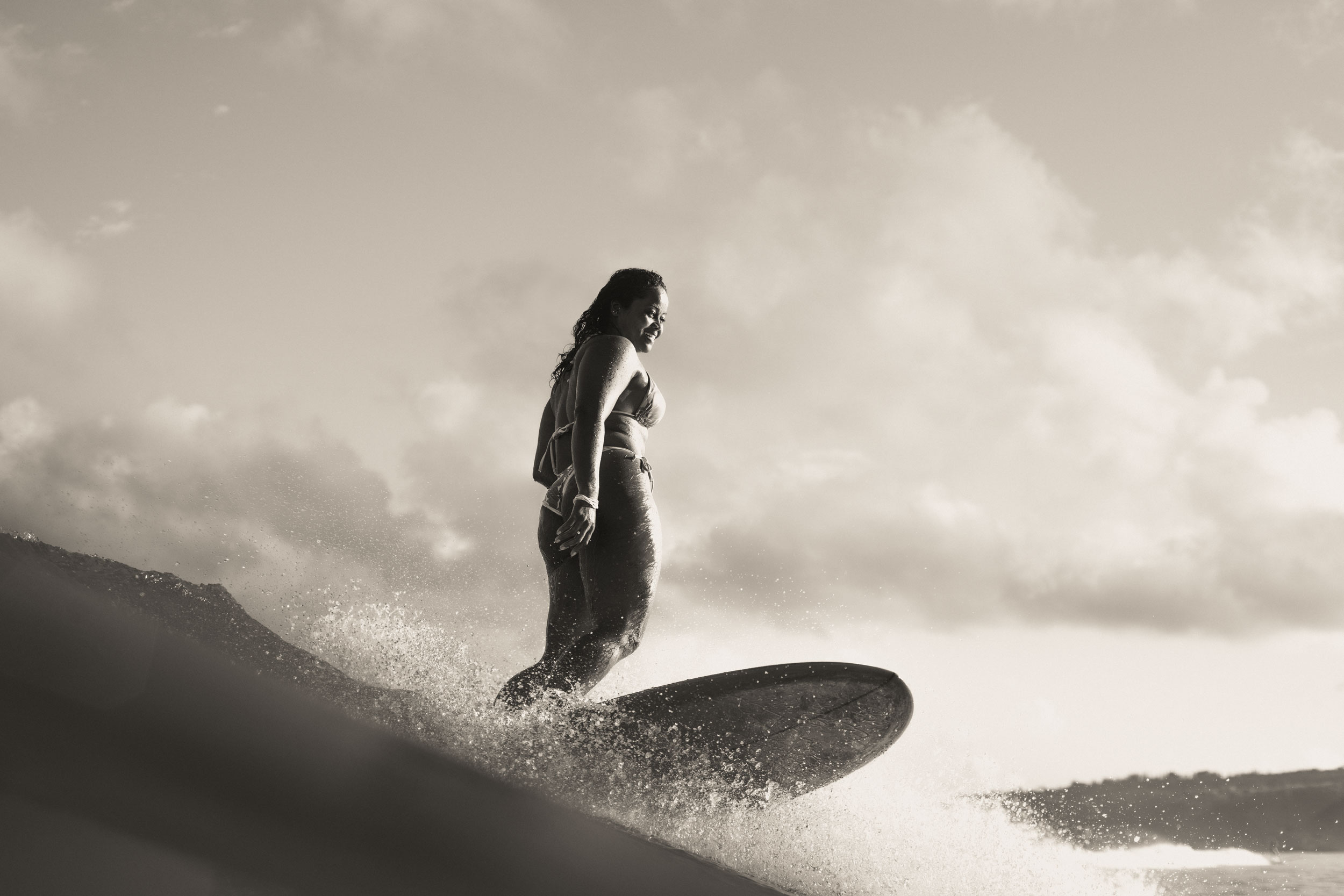
Born in one of the best surfing areas in Brazil, Suelen Naraisa was destined to be a pro surfer. Encouraged by her brother, Naraisa took to the waves at just eight years old. However, at around the same time she started surfing, she discovered she had developed cancer in her left kidney. “Surfing really helped me and gave me strength during my fight against the disease,” she says. “It gave me a new life and new opportunities.”
During her first ever surf she recalls being “washed over by a feeling of freedom. I knew at that moment that I would never stop surfing.” Not even her cancer diagnosis could stop her: once she’d recovered, Naraisa took the title of Brazilian Surf Champion not once, but twice.
Today you can find the pro riding a wave at every opportunity, and inspiring the next generation of female surfers at the surf school she founded in her hometown. “The biggest challenge for surfers in Brazil is getting the proper support – it’s a real challenge,” Naraisa says. Thankfully, she organises women-only surf events through her school to support fellow female surfers and has become a role model to young girls in Brazil.
It’s a balance that clearly provides her with purpose and joy, and Naraisa talks about the surfing community in Brazil with adoration. “Being a surfer in Brazil is freedom-inducing. You meet female surfers anywhere you go in the country.”
A lot has changed in the world since she started surfing, but the sport is going in the right direction, she tells Marie Claire. “Over the past couple of years, [we’ve started to] see all body shapes for women and men. People now know you don’t need to look a specific way to surf.
“We can all surf… the only limits out there are the ones you set for yourself.”
Director of Photography and Photographer: Séréna Lutton
Editor in Chief: Andrea Thompson
Shoot and Film Director: Lisa Oxenham
Writer: Sophie Goddard
Senior Art Editor: Ana Ospina
Chief Sub-Editor: Nicola Moyne
Producer: Sofia Piza
Videographer: Katherine Goguen Water
Videographer: Henry Michaelis Water
Photographer: Beatriz Ryder
Stylist: Lindsey Higa
Make-up Artist: Nathan Hejl using Chanel
Beauty Hair Stylist: Bridget Brager using Rodan + Fields
Lighting Assistants: Henry Han, Vincent Ricafort
Digital Technician: Victor Demeester
Production: Warm Agency, Reanna Chambers Pro Surfers
Video Editor: David Bamford
Make-up Assistant: Kate Broadhurst
Athletes: Maluhia Kinimaka, Izzi Gomez, Suelen Naraisa
Location: O’ahu, Hawai








